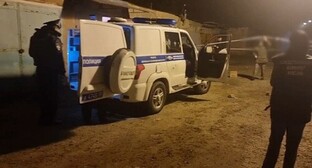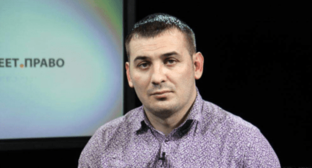04 June 2003, 02:25
Sarmats
Common name of Iran-speaking tribes that settled in the steppes of Eurasia from the river Tobol in the east to the river Danube in the west in the III century BC - IV century AD. The early history of Sarmats is connected with Savromats, among them there formed the big unions of Sarmat tribes with Roxolans, Alans and other tribes at the head. The ethnic name "sarmats" first meant the group of the nomads living west of Tanais (river Don) on the right bank. Gradually the name became common for the big nomadic world of Eurasian steppes and replaced the previous name - Scythians. Describing the peoples of the north coast of the Black sea, Plineus mentioned that "everywhere the name of Scythians is replaced with the name of Sarmats".
The base of Sarmats' economy was nomadic cattle-breeding. Sarmats that settled in the districts with previous agricultural population were dealing with agriculture, too. Among Sarmats there was going on the destruction of the clan system and the beginning of formation of the classes. There singled out the clan and tribe society, military leaders and their armies. The wide settlement of Sarmats and their movement to the west was caused by the need of new pastures, the striving to get closer to the cities and agricultural districts for trade and robbing.
The success of the settlement of the numerous Sarmat tribes - Yazigs, Roxolans, Siraks, Aors, Alans etc. can be explained not only by their number, but also by their military skills. Sarmats were very good horsemen and had not just the bows and arrows, but also long swords and heavy spears. Sarmats used metal armor (lamellar and chain mails). This ammunition enabled them to have successful battles with the lightly armed local tribes and to storm protected settlements. The Roman author wrote about Sarmats: "their tribe is agressive, free, intractable and cruel, even women participate in battles together with men".
The fate of Sarmats was different. Their active contacts with the Greek cities of the north coast of the Black sea and the Bosphorus kingdom caused Sarmatization of the local population. In Tanais and Yelizavetinskoye site of ancient settlement Sarmats were also the majority of the population. Since the 3-2nd centuries BC part of the Sarmats (Siraks and Aors) explored the valleys before the Caucasus, other Sarmats (Yazigs and Roxolans) got power over the steppes of the north coast of the Black sea. In the lower part of the river Don and along the Kuban river Sarmats assimilated with Meots. In the end of the II century BC Sarmats were Scythians' allies against the Pont kingdom.
In the I century BC Sarmats were the allies of the Pont king Mitridat VI Yevpator in his struggle with Rome. The eastern group of Sarmats was economically and politically connected with the states of Central Asia, especially with Khorezm. Since the I century AD Sarmats invaded Transcaucasia, appeared on the river Danube and settled near the borders of the Roman empire. In the first centuries AD Alans became especially strong among them. In the III century AD along the north coast of the black sea the power of Sarmats was destroyed by Goths, and in the IV century they were defeated by Huns. Part of Sarmats together with Goths and Huns participated in the Great Migration of the Peoples. Separate groups of Sarmats (Alans in particular) reached Spain and penetrated North Africa. During the early Middle Ages the group of Sarmats that remained in the south of our country got mixed with other peoples (Slavs, North Caucasus peoples), mainly with Turk-speaking tribes. Within the Ossetin nation Sarmats preserved the base of their language.
Animal style is typical for Sarmat culture of the early period (VII-III centuries BC): clothes, weapons, vessels and other household objects were decorated with stylized images (flat, engraved, relief, 3-dimentional, made of gold, bronze, bone, horn, stone) of animals depicted with great expression (for example, the Objects from the Blumenfeld burial mound in the Volga region). Later the tribes of Sarmats achieved great success in jewelry (objects from the burial mounds in the steppes between the rivers Don and Dnieper and along the Kuban river). Together with animal style images ( mainly strongly bent bodies of predators and dragons intertwined in a struggle) there appeared the images of winged geniuses, antroph-amorphous gods, vegetative motifs. The typical Sarmatian "multicolored style" appeared in the III century BC and flourished in the II-IV centuries: clothes, footwear, metal objects were decorated with precious stones, beads, closs, colored enamel etc. In multicolored jewelry they also used filigree technique. Zoomorphic motifs were gradually replaced with geometrical ornament. By the end of the Sarmat time (III-IV centuries) the ?multicolored style? becomes especially sumptuous, but things become more crude.
One of the most well-known monuments of Sarmatian time on the Don is the burial mount Khokhlach near Novocherkassk where they discovered unique jewelry made by Sarmatian masters of the 2nd century BC - 1st century AD and the objects of antic culture. Nowadays they are kept in the Hermitage.




